China Calling: Huawei’s Media Tour, Kirin 950 and Why We Went
by Ian Cutress on December 4, 2015 8:00 AM ESTIt’s Just Another Smartphone Manufacturer™
However, part of the tour of the main Shenzhen campus stood out to me (Ian) personally. Whenever we speak about Huawei, the focus is always on the smartphone market, because that is what most people can relate to as that is what our readers can actually hold something made by Huawei in their hand. But interestingly enough, consumer smartphones only account for 30% of the company’s revenue. Huawei puts a lot of resources into backbone networking and infrastructure, which accounts for 40% of the revenue.
A Huawei Cloud Base Station with many network ports and custom silicon inside
Arguably, if we were trying to cover the important markets for some of these companies (such as MediaTek as well), then networking and infrastructure would be as important as smartphones, if not more so. So we were told about Huawei’s march to 4G/4.5G/5G, as well as MIMO antennas, base stations, but also data analytics management and services to mobile carriers and other markets.
One element remained consistent within this: Huawei hardware was in the machines that powered them, which included a large array of HiSilicon ICs and heatsinks covering almost everything. There were quite clearly a number of devices attached to lots of Nanya memory (up to eight dies on one example board shown), as well as a series of what looked like HiSilicon PCIe-like switches.
HiSilicon was founded in 2004 as a subsidiary of Huawei, but the company has roots further back into the 90's when it was still known as Huawei's ASIC Design Center. Ever since, the subsidiary has diversified in a lot of market segments such as mobile, networking, video surveillance, DVB or IPTV. The company was proud to proclaim that it was the first to offer silicon based on ARM's Cortex A57 - these are server SoCs with up to 16 or 32 cores and 32MB of L3 cache. The DVB and TV market is also one of the rarely talked about markets in which companies such as MediaTek and Samsung offer a wide range of custom solutions, and it seems HiSilicon also has a range of products for the segment such as an A17-based SoC that we hadn't heard of earlier.
![]() Custom Huawei SoC, relating to networking
Custom Huawei SoC, relating to networking
In many of the devices on display in Huawei's showroom, there was a number of copper and fiber connections in almost everything, to the point where even the mini small-cell implementations had 10GBase-T and seemed to be powered by PoE (power over Ethernet).
We asked about Huawei’s application in this space, and the answer was from origin to end user – from the data center to device. Within this, the data analytics part was interesting. Carriers that use Huawei backbone implementations, either by direct purchase or lease, have access to their monitoring software and can analyze what sorts of data their users are processing – either pure data, certain web servers, streaming video and so on. Huawei stressed the point that while they can provide general hardware or work with specific customers on a custom solution, the actual processing of what their customers want to do with the data their clients produce is up to them.
“4-in-One Multi System on Chip Smooth Evolve to LTE-A”
capable of GSM, UMTS, FDD LTE and TDD LTE
With the internal metrics of throughput or the results of the customer analyzed data, both the customer and/or Huawei can deploy infrastructure to cover blackspots or enhance the direction of content – in one scenario, we saw a mockup of Huawei’s software which had what can be described as ‘Amazon Recommendations’. It was almost as clear as ‘your users seem to be requiring this (a) in regions (b)(c), we recommend the following products (x)(y)(z)’. There was no particular mention of any common PCIe accelerators usually associated with data analytics (Xeon Phi, GPUs, FPGAs), which makes us wonder how much is custom HiSilicon compared to off-the-shelf parts. Of course within all this, Huawei offers a sustained servicing and maintenance package, similar to how big tech firms bring in the revenue after selling the hardware.
So here’s in interesting thought – Huawei is in the SSD business. That pretty much came out of left field, but it in retrospect it should have been one of those things that was probably pretty obvious. Here’s a PCIe SSD, with a custom HiSilicon Hi1812 controller supporting PCIe 3.0, NVMe, 800K IOPS and 3.1 GB/s of read bandwidth with MLC planar NAND. That makes it sound like there’s a RAID controller in there, as no individual single controller we know of can reach those speeds (Samsung’s MGX can do 2.5 GB/s). There’s no telling if it uses an ARM IP variant or a custom ISA developed by HiSilicon, which makes it interesting. Underneath the explanation of the Hi1812 are a couple of other choice parts, scratching the surface of just how deep the rabbit-hole goes.
Because Huawei has HiSilicon to develop custom hardware and SoCs fit for purpose, it allows the vertical integration element to be rather interesting from the outside. We’ve talked before about how HiSilicon keeps its cards close to its chest, and in a similar situation to some of ARMs partners that do not make announcements, we can start to get a picture of just how deep HiSilicon permeates into Huawei’s infrastructure division and how most of us probably have data that has passed through Huawei-based networking products through the web, and how much the hardware is a part of that process.
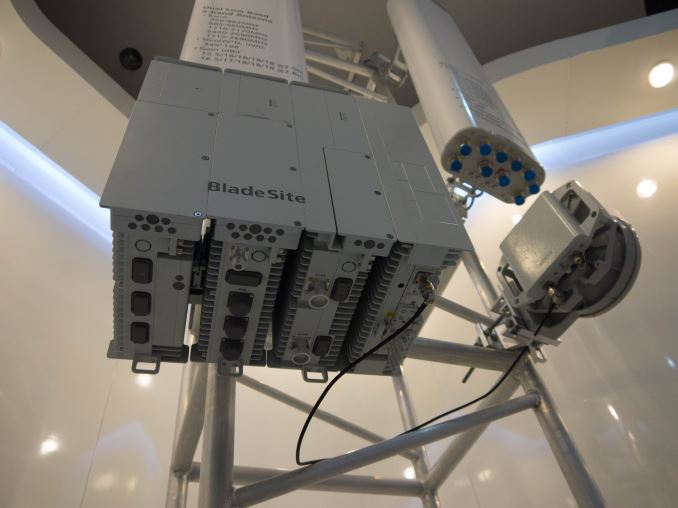
Blade-like modular baseband-station and antennas
For any of our UK readers, with the recent trip of Xi Jinping to the UK you may have heard the recent discussions in the UK about having China invest in our new power plants. The concept of this for some citizens results in the fear about having China as part of that process. But most people don’t realize that China as a provider is already in the ecosystem – when people access the internet, their data most likely goes through a series of hops that might include Huawei network switches between device and <insert email client> or <insert social media network platform> or when a website script may call on services elsewhere on the web and you don’t even realize. So aside from the commonly named network infrastructure players in the west, such as the commonly known Cisco, Alcatel-Lucent, Nokia or Ericsson, there are players such as a Huawei or a MediaTek that have their arms in the game as well. Given how vast the market is, especially for total worldwide revenue, there are many players that the general public (or even technology magazine readers) won’t have ever heard of.


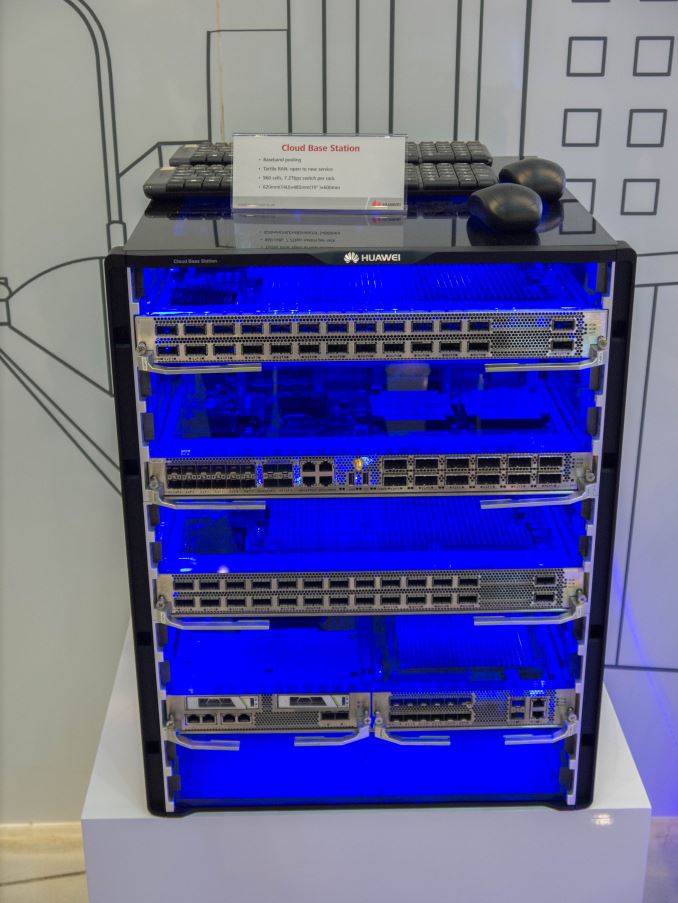
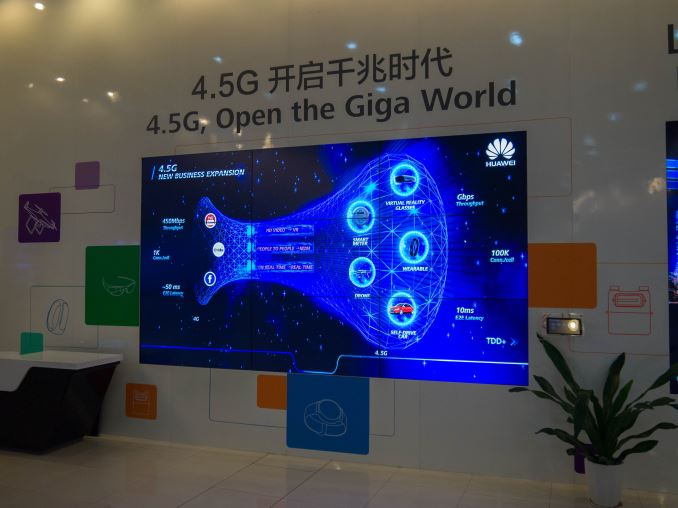
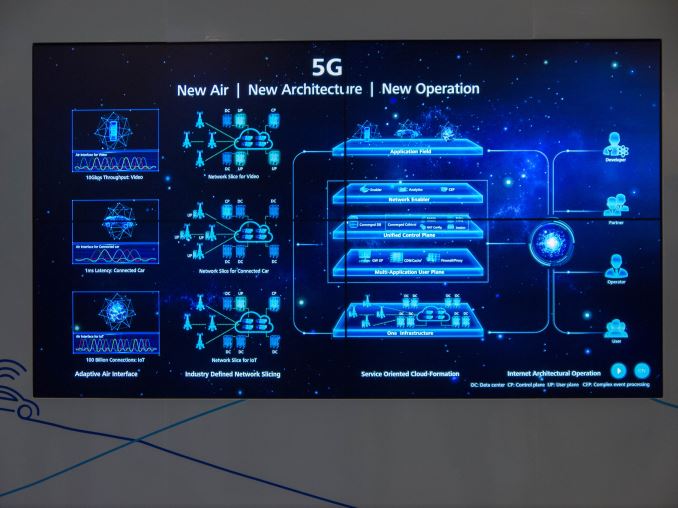


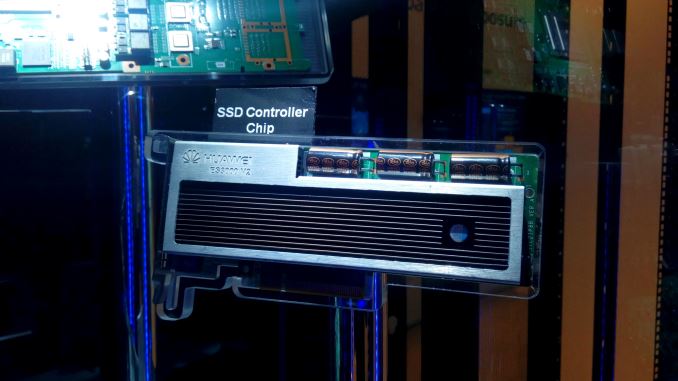
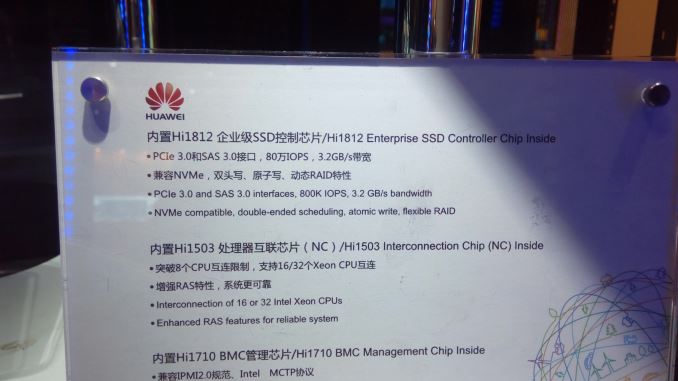








109 Comments
View All Comments
londedoganet - Friday, December 4, 2015 - link
Since you so nicely asked (that was sarcasm), here's comments for the first three pages. I got too irritated by that point to continue:-Page 1-
> I could certainly imagine members of my family seeing the name ‘Huawei’ and not having an idea to pronounce it.
"having an idea OF HOW to pronounce it"
> then from the outside HiSilicon's Kirin lineup seems to eying the former development.
"seems to eying"? "seems to BE eyeing", perhaps.
> the devices we have tested so far do not necessarily produce anything new into the ecosystem.
"produce anything new"? Was the author trying to say "introduce anything new"?
> an overview of the Huawei media tour combined a look into corporate strategy,
"combined WITH a look"
-Page 2-
> with a back-thought to large towns of 10,000+ people devoted to one factory
"with a back-thought"? I don't know what that means.
> the crucial part of accepting these trip offers is to talk and understand the people that matter most
"talk TO and understand the people"
> and as a journalist you either keep pumping out more of the same, rather than trying to be the best you can be and generate the sort of traffic that makes who you write for unique.
The "either" is missing an "or" clause, and is therefore redundant.
> so we were under no disillusion of the circumstances
"under no ILLUSION"
> VP of the Handset Product Line and the announcement of the Kirin 950.
I don't think you can be "VP of... the announcement of the Kirin 950", so the phrasing is awkward.
-Page 3-
> This dichotomy between ‘on-show corporate’ and ‘the general workforce’ is mirrored in companies around the world, to the extent that we also had lunch in a special canteen for guests with a background band as you entered.
While it can be taken from context (and the accompanying photo) that the "special canteen for guests" was at Huawei, some words to make the link explicit would have been better. For example, "This dichotomy between ‘on-show corporate’ and ‘the general workforce’ is mirrored in companies around the world, AND HUAWEI WAS NO EXCEPTION, to the extent that we also had lunch in a special canteen for guests with a background band as you entered."
> we were not allowed to take images inside of the facilities.
Images are usually "captured", while photos are usually "taken". This sentence mixes verbs in a non-standard manner.
> they all need to perform similar tests dictated international and industry standards.
"dictated BY international and industry standards"
cruzinforit - Friday, December 4, 2015 - link
It's also interesting to note that I think a few of these can be explained by the difference in how people from the UK talk compared to Americans. Since you know, Ian is from the UK it makes sense his manner of talking/typing might include british-english idiosyncrasies that we don't have in American english.phoenix_rizzen - Friday, December 4, 2015 - link
Nice theory, but that wouldn't explain why Canadian readers find it annoying since we align more with the Brits than the Yanks.Ian Cutress - Friday, December 4, 2015 - link
Actually, it was looked over by five different sets of eyes, minimum. It seems I missed out a number of prepositions and conjunctions, and everyone's brain filled them in. Naturally when several thousands of readers look over, a couple of errors becomes a debate about a series of style choices or idiosyncrasies. But nevertheless, we're taking points on board always, especially with a mix of styles from our editors.I've taken the steps and adjusted most of what you've listed here - a couple were a bad mix of two half-sentences or missing punctuation mixed with non-standard rules (serial comma, for example). Some I disagree with, because they are how I would say them in company (and colloquially correct here at least). But with most, I totally agree with you.
Thanks for the input, it is much appreciated. If any of our readers ever feel I've screwed up something linguistically, I'm happy to take an email as well (ian@anandtech.com). A few of our readers do already every now and again :)
-Ian
SunnyNW - Saturday, December 5, 2015 - link
I am a Big fan of Anandtech but to be honest I have noticed quite a few mistakes in recent articles. Some seem so obvious that I am very surprised that they are looked over. I hate to be That guy pointing out grammar mistakes and the like in comments so I don't. Just to add, these are definitely errors and not just author specific style choices or idiosyncrasies. Common examples seem to be duplicate words in a sentence, simple misspellings, and/or missing words. I love the content of this site therefore please just take this as Constructive criticism, the site produces Top Quality material so I would hate for editing to become an issue. I have been reading the site for years and at least to my awareness the errors seem to have become more prominent recently, such as in the past month or two.SunnyNW - Saturday, December 5, 2015 - link
My original comment had a few extra sentences but for some reason was being flagged as "Spam" and the site would not allow me to post. I started to randomly delete some sentences and it let me post but my post original comment was not harsh or "spam" in any way. It was very similar to what I posted above just with a few extra sentences none of which contained anything negative. I'm curious to know why my comment was being flagged as "spam" and what usually leads to this type of response, I've never encountered this before.s.yu - Saturday, December 5, 2015 - link
Indeed, a draft with lack of basic spelling check.phoenix_rizzen - Friday, December 4, 2015 - link
Oh, good, I'm not the only one that's irritated by this.londedoganet - Friday, December 4, 2015 - link
"hugh-er-way"? That soundsA) Nothing like how it would be pronounced in Mandarin (i.e. "hwa-way"), and additionally
B) More like the brand name for a laundry bleach ("Hue-Away, now with extra whitening power!")
Communism - Saturday, December 5, 2015 - link
The 2nd suggestion by Ian describes how the name would be pronounced in Beijing Dialect.